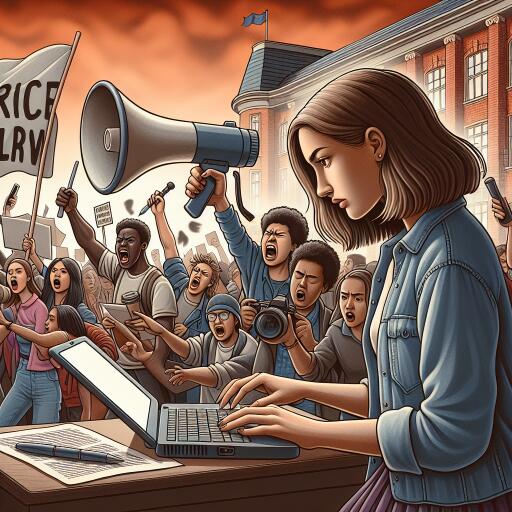“All We Can Do Is Type”: Chronicles of a Campus Under Siege
It was a crisp Monday morning, not long past dawn, when Anika Arora Seth found her sleep abruptly cut short. A hurried call had her racing across the university—an urgent tip-off about a police crackdown on student protesters had just come in. As the editor-in-chief of the Yale Daily News and a dedicated journalist, Seth knew where she needed to be. The protesters, advocating for Palestinian rights, had made the Beinecke Plaza their stage for days, voicing their dissent through what had been peaceful means. Now, as authorities moved in, Seth’s commitment to her role was clear. She was there to document, to report—to ensure the story was told.
However, the reality of journalism under pressure soon reared its head. Seth and a companion, armed with nothing but their laptops and a determination to share the unfolding events with the world, found themselves perched on a cement wall—the closest vantage point they could claim outside the restricted zone. Their efforts to cover the story were met with stark warnings from the officers below. Threats of arrest were levered against them for simply doing their jobs, a chilling reminder of the precarious position journalists often find themselves in. Undeterred, they continued, until they had no choice but to retreat for fear of arrest.
The scene that unfolded at Yale is a microcosm of a larger struggle faced by student activists and journalists across the country. Universities, traditionally bastions of free speech and critical thought, have been thrust into a delicate balancing act. The right to protest, the safeguarding against hate speech, and the freedom of the press are all on a collision course, leaving individuals like Seth in the unenviable position of navigating these troubled waters.
Seth’s journey is emblematic of the tenacity and courage that define student journalism. Balancing her demanding academic commitments with the rigors of running a major university publication, she has embodied the spirit of dedication necessary to bring crucial stories to light. From facing death threats to managing a team of young reporters eager to make their mark, Seth’s tenure as editor-in-chief has been anything but ordinary.
The protests at Yale brought to the fore the intense emotions and strong convictions that have been simmering on college campuses nationwide. These demonstrations, while marked by a fervent display of solidarity for Gaza, were met with an equally determined response from the university and law enforcement officials. Despite the heightened tensions, the student journalists under Seth’s leadership endeavored to cover the events with accuracy and fairness, all while juggling the internal dynamics of preparing for a significant leadership transition within their publication.
Yet, amidst the chaos, there is a shared understanding among those on the front lines: the power of the pen—or, in today’s terms, the keyboard. The commitment to report, to inform, and to hold those in power accountable remains undeterred. This incident serves as a stark reminder of the challenges that lie ahead for student journalists. Facing opposition, navigating threats to freedom of expression, and balancing the pressures of academic life, they continue to push forward. Their resilience is a testament to the essential role they play in not just their university communities, but in the broader landscape of journalism.
As Seth prepares to pass the torch, her experiences underscore the vibrancy and vitality of student journalism. It’s a relentless pursuit of truth, often under the most challenging circumstances. Yet, it is in these moments of adversity that the spirit of the student press shines brightest. The story of the Yale Daily News and its coverage of the campus protests is but one chapter in the ongoing saga of student journalism’s enduring impact. As these young reporters and editors move forward, they carry with them the lessons learned from nights spent huddled over laptops, the tense exchanges with authority figures, and the unyielding belief in the power of their words to enact change.
In a world increasingly complicated by censorship, fake news, and a multitude of voices vying for attention, the clarity and dedication of student journalists like those at the Yale Daily News offer a beacon of hope. Their work reaffirms the essential nature of journalism in upholding democracy, fostering informed communities, and giving voice to the voiceless. As Seth and her team have shown, even when faced with the might of institutional power, “All we can do is type”—and in doing so, they remind us of the profound impact of steadfast, courageous journalism.









